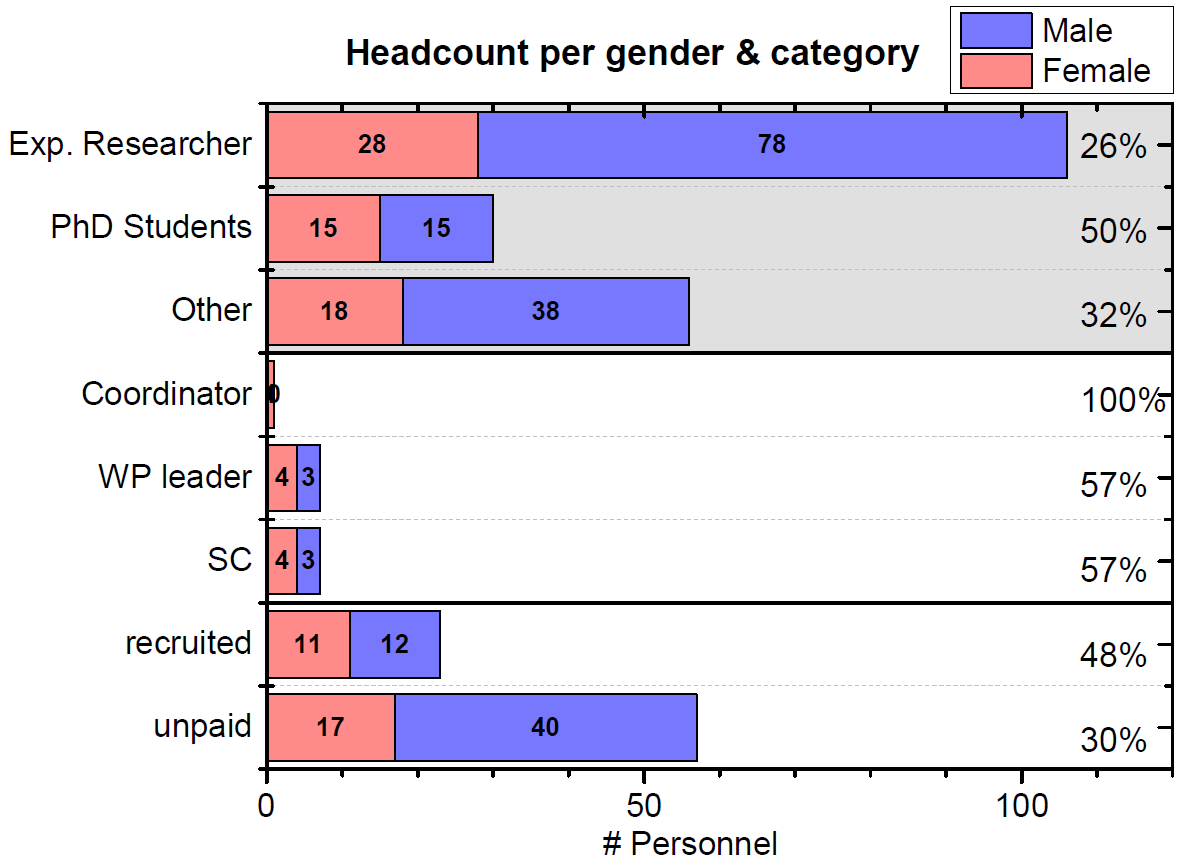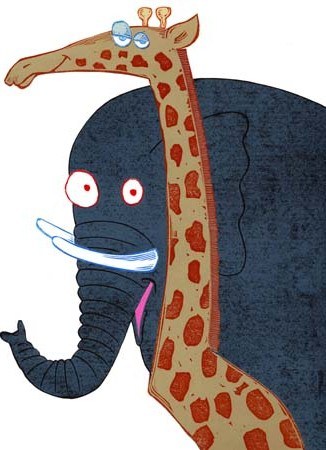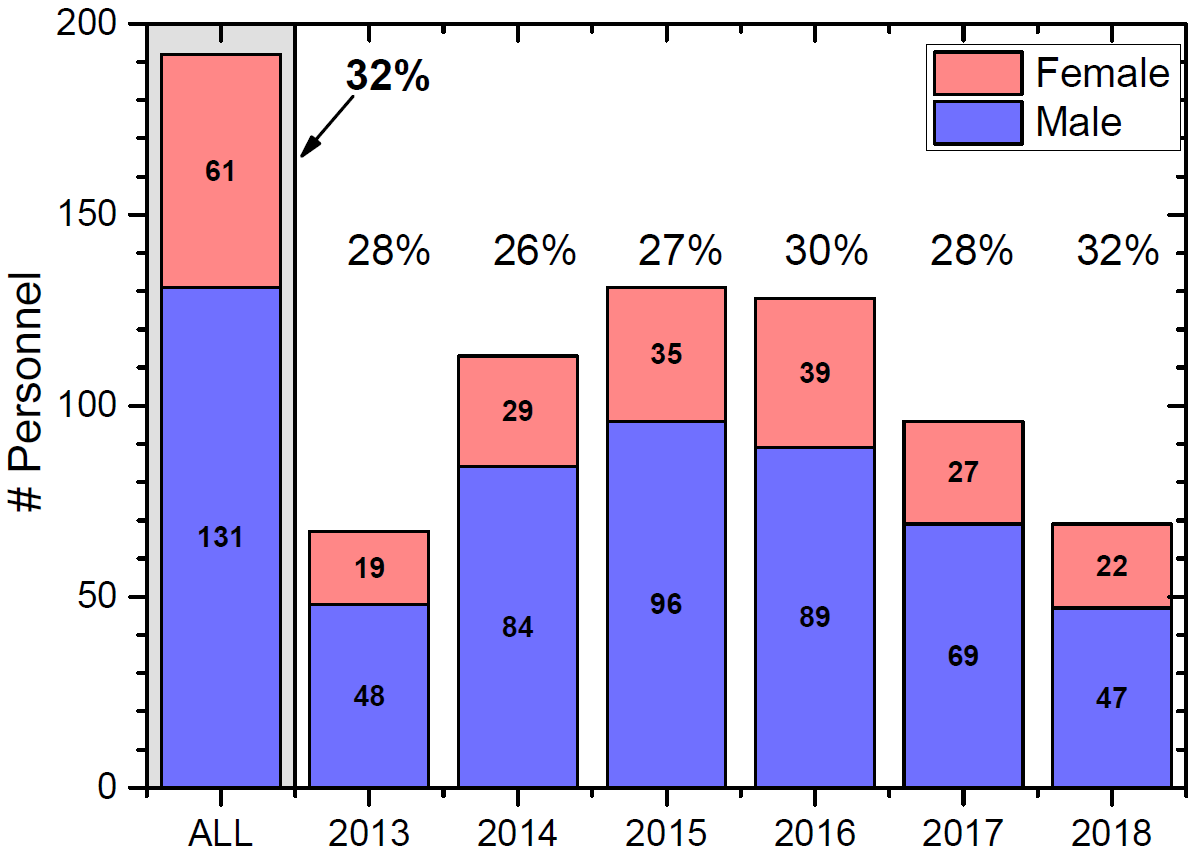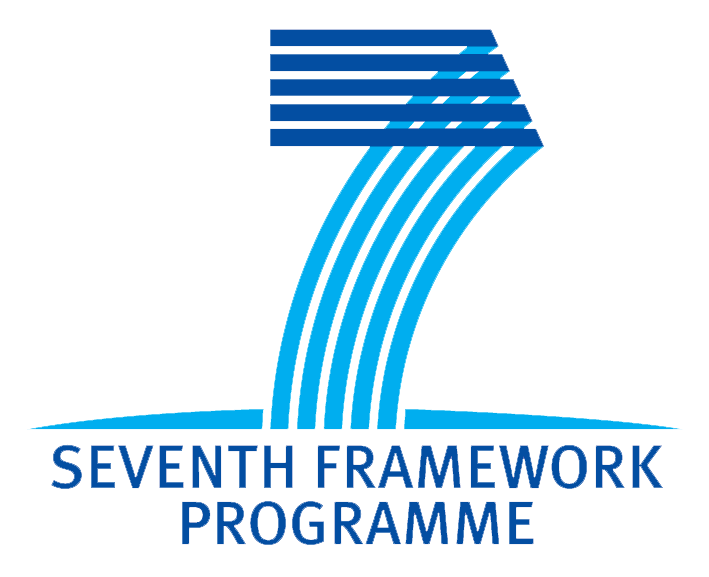Separation of the categories in experienced researchers, PhD students and Other shows that researchers on the junior level (PhD students) are represented in the project as equal numbers for female and male employees. However, on the experienced researcher level, a large gap occurs with less than one third (26%) female researchers in the BACCHUS consortium. However, this number does not represent the situation at all ranks of experienced researchers. For example, on the Postdoc level 38% of the employees were female (11 out of 29 participants) and it points to the fact that the discrepancy is due to the large number of male PI's (only 21% female), head of groups and professors, which were part of BACCHUS from the beginning of the project and many of which contributed as unpaid personnel. The effect of this group becomes clear from the fraction of only 30% females in the unpaid personnel category.
On the management level (Steering Committee (SC) and work package (WP) leaders) the BACCHUS project is well balanced with a femal project coordinator.
The recruiting for the BACCHUS project shows also a good balance with a fraction of 48% female personnel, also with balanced numbers of hired males and females on the PhD (3 out of 7 female) and Postdoc (5 out of 6 female) level.
The gender actions performed during BACCHUS were successful and the status on the project level is promising for the future. However, further actions are necessary for a good gender balance in research to decrease the imbalance on the level of experienced researchers on the long term.
|

|



 Toolkit: Gender in EU-funded research, 2009.
Toolkit: Gender in EU-funded research, 2009.
